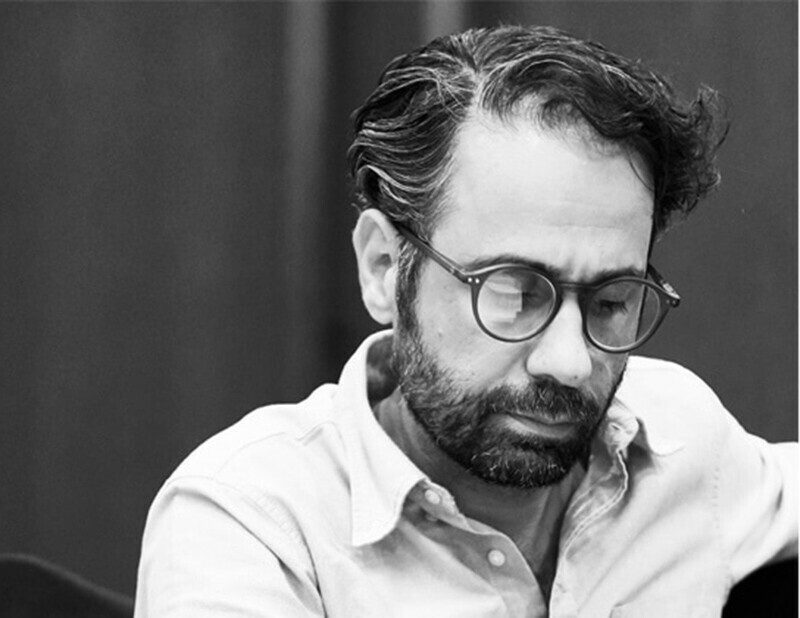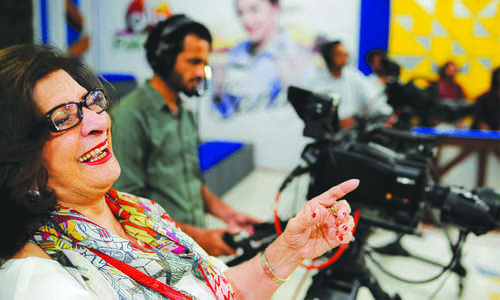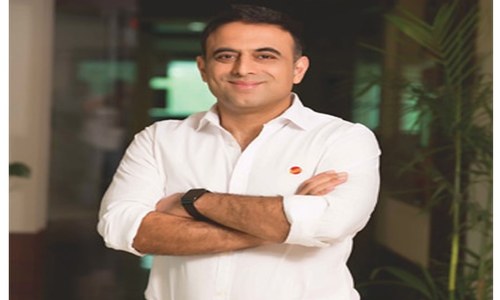The Man From San Francisco
First published in Aurora’s November-December 2008 edition.
I first heard of Ali Mumtaz three years before I met him. I knew him as the art director from San Francisco who occasionally wrote for *Aurora and once made my life miserable in the process because he wanted his article printed upside down and I had the unenviable task of getting his page designed by a graphic designer who wasn’t particularly thrilled at the prospect.
His articles, however, if they could be called articles – for they were mostly cartoon strips and doodles – were entertaining not just because they were different, but because his message was quite universal, in that no matter which part of the world you work in, there will always be a clash between clients and creatives.
Apart from his articles, Mumtaz was the subject of a great deal of discussion among my colleagues and I. Here was a Pakistani who was working as an art director in a world-renowned advertising agency, Y&R, and we were impressed, if a tad curious, about his achievements.
Suffice to say that at least in a limited sense, Mumtaz’s reputation preceded him. I had this image of him in my mind as an elegant older man, possibly in his forties with greying hair at his temples. My excuse for this entirely misconceived notion was the rationale that he had to be an older guy given his position at Y&R.
Thus, when Mumtaz walked into the Aurora office one morning earlier this year, I was in for a surprise. For starters, he turned out to be quite young – late twenties or early thirties; quite good-looking – in a fair-skinned, dark-haired sort of way; with an interesting tattoo on the inside of his forearm and no grey hair in sight!
Mumtaz’s greatest advantage stems from the fact that he realised what he wanted to do early on in life. His father worked in the marketing department of PIA and would bring home ads that had been done by the creative agency, which at that time was IAL.
Mumtaz was interested in what he saw and wound up doing an internship at IAL working with big names such as Naseer Haider, Faraz Maqsood Hamidi, Cyma Zulfiqar Saeed and Sarmad Ali.
His experience at IAL, he recalls, was a mix of proofreading, running for cups of tea and just hanging around to see how advertising was created and executed. His first break came on a rat killer product when he made some “absolutely horrible sketches, but Faraz [Maqsood Hamidi] saw the potential in them and incorporated some elements into the print ad.”
In this way, Mumtaz worked on and off for IAL for three years in the early nineties, until he decided to study communication design at the Indus Valley School of Art & Architecture.
The course fell far short of his expectations because art direction was equated with graphic design, and he says that the former is about so much more than just graphics. With this in mind, he applied to a few schools in San Francisco and eventually decided on the up-and-coming Academy of Art.
After completing his degree, his first job was with an agency in SF called Ozone, which believed in ethical advertising. The agency closed down soon afterwards and Mumtaz moved on to another agency which specialised in high-tech advertising and paid him lots of money to do “absolutely sh** work”.
Six months into the job, he started looking elsewhere and finally landed at Y&R as a junior designer.
As he rose through the ranks at Y&R, from junior designer to art director, Mumtaz worked on several accounts, including Chevron Aviation, Dr Pepper, McAfee, Palm and Seven Up, but remembers Adobe and Hitachi with special fondness.
The challenge with Hitachi, he says, was to stand out in a sector where all the other players were running 300-word ads. The idea was to play with a visual that was so simple that everyone could understand it. Fortunately, the marketing team at Hitachi was quite gung ho about the idea and kept running the ads, much to the benefit of their sales graph.
With Adobe, the challenge was even more difficult: to do interesting advertising for a product that was being used by creatives all across the world but didn’t do great ads for itself. The solution was a series of cryptic ads (when Adobe went on the web in 1999), which Mumtaz says was a lot of fun.
Another ‘fun’ account was MGM, but “that was mainly because of the regular trips to Las Vegas.”
But work, or at least commercial work, is not the only thing that occupies Mumtaz’s time. A strong believer in giving back, he has done his fair share of pro bono work, which, quite apart from the high it gives him, is also good when “you want to do something very creative and groundbreaking, and you just can’t sell it to a paying client.”
His pro bono strategy has certainly paid off, and his most memorable ad is one he did for JBL with Amean J., which earned him a Clio and appeared in CommArt magazine.
“It was a really simple ad, a bloody Q-tip, but it appeared in CommArt, which is huge, because they narrowed it down to a few hundred from over 30,000 entries.”
Another way of giving back is via teaching new creatives and Mumtaz is part of the faculty at the Academy of Art in San Francisco.
Talking about his teaching experience, he says it is “really satisfying because you get to keep in touch with what young people are doing. As much as advertising needs experience, it is also a young person’s business because that is where the crazy ideas come from.”
And whether he likes it or not, advertising is a way of life for Mumtaz – his wife works as an account manager at Goodby Silverstein and Partners, so the creative versus client management debate rages on at home.
Outside advertising – in the very little time he has spare – Mumtaz enjoys playing cricket with a multicultural team of Indians, Pakistanis, South Africans and Thais.
My interview with Mumtaz ends with some discussion about his future – he has no idea what it holds because everything in advertising is changing, “especially the TV spot. The big thing is how you convince someone to like your ad so much that they will pass it on to 50 other people” – and about his tattoo.
“I have a lorem ipsum tattoo – it is dummy text, and it is used until something better comes along, which is what I am waiting for.”
Six months after my interview with Mumtaz, I am told that he has left Y&R and is currently working as a freelance art and creative director. Although he responds to my email and insists we meet up when he is in Karachi next, he neatly sidesteps queries about his reason for leaving the agency.
Is he planning to continue in the freelance vein? Is he going to move to another agency? Is his profile picture on Facebook, half submerged in water with a scuba diving mask, indicative of the fact that he is unwilling to reveal more than is necessary? Many are the questions I still wish to ask the man from San Francisco.




Comments (0)